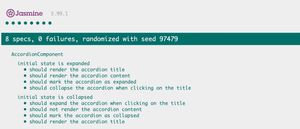If you want to embed a PDF document on your website you can use an iFrame. The browser will automatically render a PDF viewer.
Google Chrome, Firefox and Safari accept some parameters to customize the viewer. Add the parameters as part of the url fragment (after the #). Multiple parameters can be separated by &.
<iframe src="/path/to/document.pdf#toolbar=0"></iframe>The following parameters are supported:
| Parameter | Value | Description | Support |
|---|---|---|---|
toolbar | 1, 0 | Show or hide the toolbar | Chrome |
view | FitV, FitH, Fit | Change the zoom level to fit (vertical, horizontal or both) | Chrome |
zoom | number | Set a specific zoom level in % (example: 300) | Chrome, FF |
page | number | Set initial position to a specific page (example: 2) | Chrome, FF, Safari |
nameddest | string | Set initial position to a named destination (like a heading) | Chrome |
search | string | Search for a string in the document | FF |
